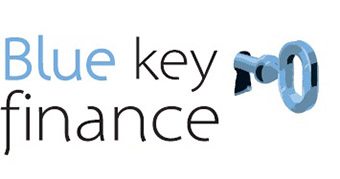What you need to know about interest-only home loans
An interest-only home loan is a product that allows you to obtain a loan and only pay the interest for a set period of time, without paying off any of the loan principal.
Many people think that interest-only home loans are only for serious property investors with aggressive purchasing strategies. However, all kinds of property buyers can apply for an interest-only loan and there are a lot of clever ways you can use them to your advantage.
In this article, we talk about the pros and cons of interest-only products to help you decide if it’s time to say hello to interest-only.
The pros
Smaller loan payments
During the interest-only period of the home loan, your monthly loan payments would be lower than with a principal and interest loan. This is because your payments only need to cover the interest of the loan. Great if you want to reduce your expenses!
Free up cash
Lower loan payments mean you could use your available cash for other purposes that may be financially beneficial. You could use the money to pay off debts to help save money on interest, make other investments to build wealth for your future, fund a loan to purchase another property or to make home renovations to increase your property value and equity position.
Tax deductible for property investors
Want to save money on tax? The interest on an investment property debt is usually tax deductible for property investors, as long as you follow the ATO rules. That means an interest-only loan could be very beneficial if you are a property investor because it could help you to maximise your tax deductions and cash flow. Unfortunately, if you are using an interest-only loan product to purchase a home as an owner occupier, you will not receive any tax deduction for interest.
Benefits are ongoing for the life of the interest-only term
With an interest-only home loan, you can choose an interest-only term from 1, 2, 3, 4, 5 and even up to 10 years. This can be very beneficial for tax minimisation strategies and financial planning purposes. It could also be very beneficial for people buying a home on a tight budget as it can help you plan your finances for the first few years you own the property as well as keep your loan payments lower.
Make payments on the principal when you have extra cash
Many interest-only home loans allow you to make payments on the principal of your loan if you want to. This means that you can still build equity in your property by making a repayment on the principal of the loan when you have the extra cash.
The cons
It’s possible that you may not build equity
Interest-only loan payments do not help you build equity in your property because your loan payments do not pay down the loan principal. That means you will be relying on property prices to rise to gain equity (unless you make extra payments as mentioned above).
When the interest-only period ends, the loan will revert to a principal and interest loan and your loan payments will increase unless you make other plans.
If you decide to take out an interest-only loan, you should be careful to plan ahead for what you will do at the end of your interest-only period. At that time, you will have to decide whether to renegotiate another interest-only term, allow the loan to revert to a principal and interest loan, refinance the loan, or sell the property to pay off your debt.
An interest-only loan will cost more in interest over the life of the loan than a principal and interest loan.
Very few people keep a loan for the full 30 years, but you should be aware that the cost differentials between an interest-only loan and a principal and interest loan can be quite significant when calculated over the entire life of the loan. For example:
- With a normal principal and interest loan for $500,000 at 4.78% p.a. based on an LVR of 80% over 25 years, the total cost of interest on the loan would be $357,766 over the 25-year period.
- On an interest-only loan for $500,000 at 4.78% p.a. based on an lvr of 80% over 25 years with an interest-only period of 10 years, the total cost of interest on the loan would be $440,443 over the 25-year period. This means that the interest-only loan could cost you an additional $82,676 in interest compared to a 25-year principal and interest loan.
You may miss out on a golden opportunity to pay down the principal while interest rates are low.
Is a principal and interest the right loan for you considering that interest rates are now at all-time lows? Sometimes it can be worth paying more now to save money later. Paying down as much as you can off the loan principal now could mean that when interest rates do rise, you will be paying those higher interest rates on a reduced loan amount. Of course, a reduced loan size could mean lower loan repayments and/or paying less interest in the long term.
If you’re considering using an interest-only home loan, please get in touch. We’ll help you decide if it’ the right option for you.
If you haven’t already, click on any of the below links to download our FREE E-Book or email us instead and we’ll send it to you within 24 hours.




Leave a Reply
Want to join the discussion?Feel free to contribute!